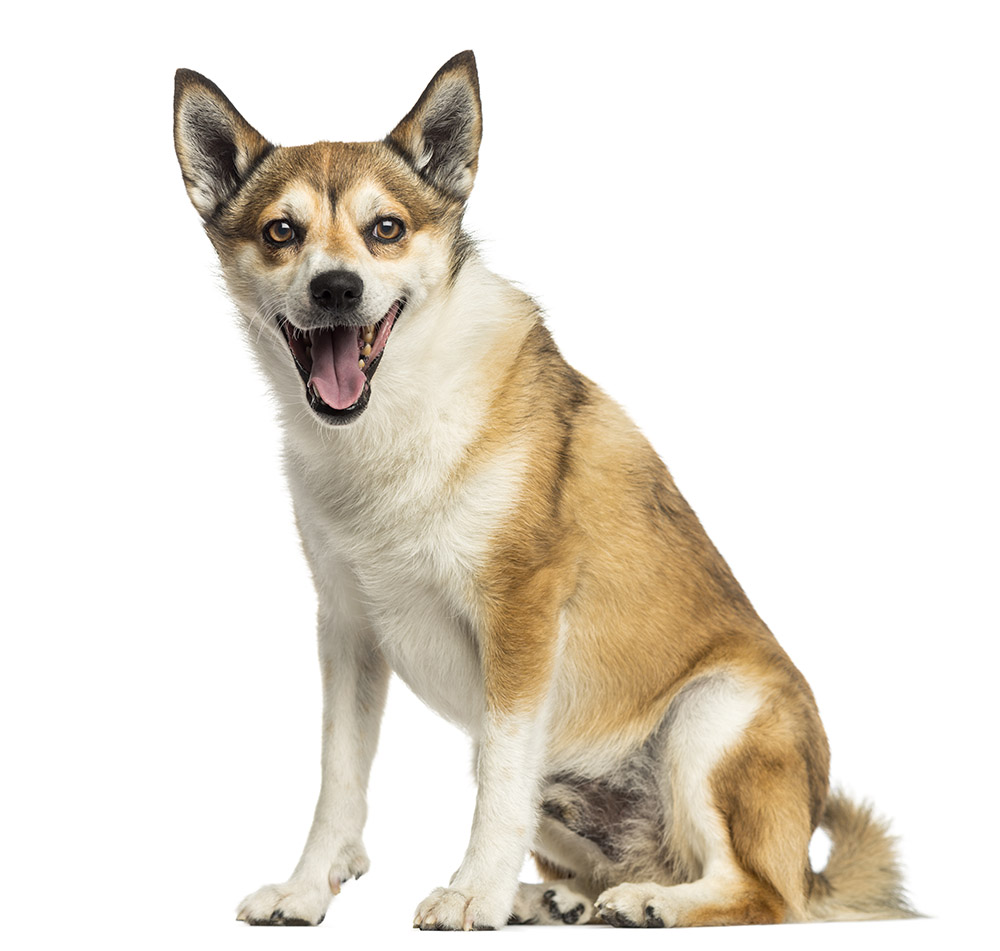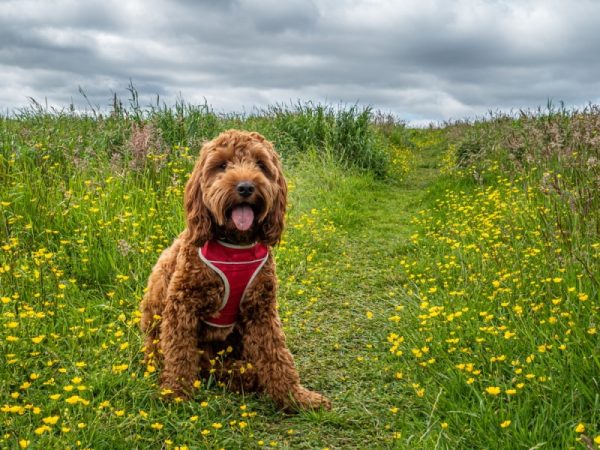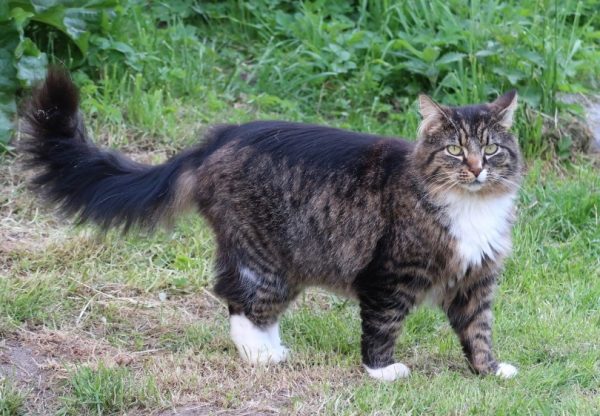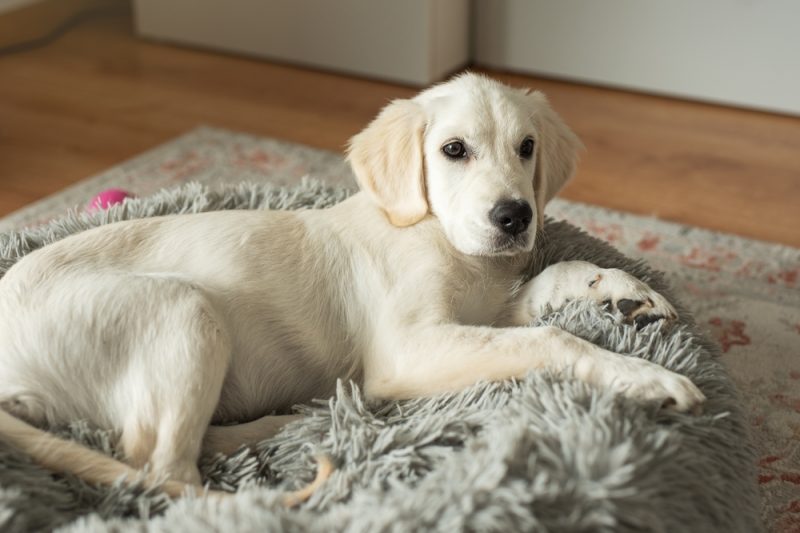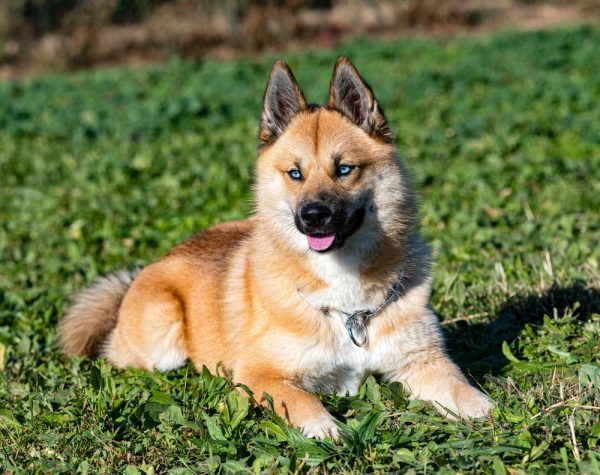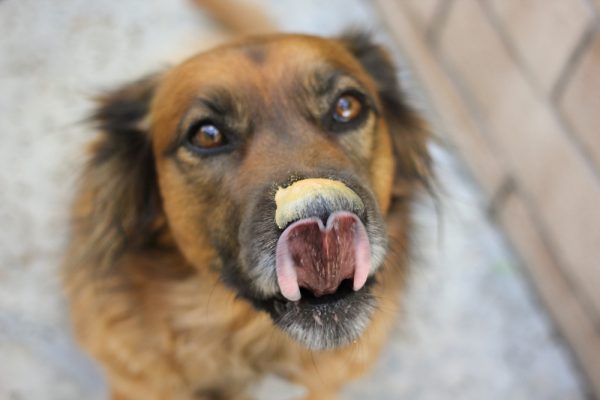In this article
View 8 More +Hailing from the harsh landscapes of Scandinavia, the Norwegian Lundehund is a rare but unique small dog that you’ll want to learn more about! They’re friendly, hardy, and athletically gifted, with much to offer the right family. Keep reading to find out all about the adorable Norwegian Lundehund.
Breed Overview
Height:
12–15 inches
Weight:
12-18 pounds
Lifespan:
12-15 years
Colors:
Reddish-brown, white, fallow, and tan
Suitable for:
Active families and individuals with experience owning dogs who don’t mind excessive shedding
Temperament:
Friendly, athletic, cheerful, clever, sensitive, can be shy
You might not have heard of the Norwegian Lundehund before coming across this article. These small dogs aren’t very common in the United States yet, but that may change as people learn more about them.
Norwegian Lundehunds are full of surprises, not the least of which are some genuinely mind-boggling physical traits. In this article, you’ll learn about the personality quirks and care requirements of this former bird hunter turned charming family pet, the Norwegian Lundehund.
Norwegian Lundehund Characteristics

Norwegian Lundehund Puppies
Norwegian Lundehunds are one of the newest breeds recognized by the American Kennel Club (AKC).1 The latest AKC popularity rankings have them at 198 out of 201 based on the number of registered dogs. Because of that, you’ll almost certainly need to buy a Norwegian Lundehund puppy from a breeder, and you can expect to look long and hard to find one, too.
The AKC and the official Norwegian Lundehund Breed Club maintain lists of breeders in the United States, which is probably your best place to start looking. You may need to go on a waiting list for a puppy. You may also need to expand your search for a puppy to international options, such as breeders from Norway and other Scandinavian countries.
Once your Norwegian Lundehund puppy comes home, you should be prepared to spend significant time on socialization. They can be shy around unfamiliar humans, and early socialization helps build their confidence. Since they’re intelligent and active, Norwegian Lundehund puppies benefit from regular exercise and training classes.

Norwegian Lundehund Origin & History
The Norwegian Lundehund was developed in Norway during the 16th century for the specific task of hunting Puffins. The residents of rugged Norwegian islands relied on puffin meat for food, but the birds tended to nest in nearly inaccessible rocky cliffs. The athletic and impossibly flexible Norwegian Lundehunds were the solution.
Once the Puffin hunting techniques changed, the Norwegian Lundehund became unemployed and nearly extinct. The breed survived only because the remaining dogs lived in isolated locations. A revived breeding program in the mid-20th century helped rebuild the Norwegian Lundehund’s numbers, but they remain a rare breed, especially outside of their native country.

Temperament & Intelligence of the Norwegian Lundehund 🧠
Norwegian Lundehunds are known for their friendly personalities. They are affectionate and loyal but also protective of their families. They were bred to navigate tricky terrain on their own, and they have a knack for creativity and problem-solving.
Unfortunately, this trait can get them into trouble since they also have a reputation for being escape artists! Their unique physical traits and fondness for digging also contribute to this questionable talent.
Norwegian Lundehunds can be shy and sensitive dogs. If they’re not exposed to other animals and people as puppies, they can grow up cautious and fearful. Although they are smart dogs, the Norwegian Lundehunds don’t tolerate harsh or rough training. This sensitive breed can quickly grow to mistrust their owners if handled incorrectly.
Are These Dogs Good for Families? 👪
Norwegian Lundehunds generally get along well with kids, making them a good choice for many families. Because they’re on the smaller side, they should be supervised around younger kids who may not know how to be gentle with their pets yet.
Busy families should make sure they have the time to keep their Norwegian Lundehund properly exercised and mentally stimulated each day. They do best in a home with a yard where they can run and burn off energy. They can also be a bit noisy, so families who live in apartments or similar housing may not be the best fit.
Does This Breed Get Along with Other Pets? 🐶 😽
Norwegian Lundehunds typically get along with other dogs if properly introduced and socialized. Because of their hunting background, they can be aggressive toward cats or small exotic pets. It’s essential to supervise their interactions with cats carefully and keep the exotics safely out of sight for their own good.

Things to Know When Owning a Norwegian Lundehund
Before you go to the trouble of hunting down a Norwegian Lundehund breeder, you’ll want to be sure you’re prepared to handle the daily needs of the breed. Here’s what you need to know when owning a Norwegian Lundehund.
Food & Diet Requirements 🦴
Healthy Norwegian Lundehunds typically don’t have any special diet requirements. The breed is prone to a digestive disorder (more on this later) that requires veterinary management. Otherwise, they should thrive on a high-quality, nutritionally balanced diet.
Ask your vet to help you calculate how much your Norwegian Lundehund should be eating since they tend to overindulge sometimes. Commercial diets are the easiest to feed and contain all necessary nutrients. If you prefer to feed a homemade diet, consult your veterinarian first to ensure it’s correctly balanced.
Exercise 🐕
Norwegian Lundehunds are considered medium-high energy dogs, especially for their size. Daily exercise is a requirement, but you don’t have to work as hard to tire them out as you would a larger, energetic dog.
Plan on providing at least 30 minutes of exercise daily, such as a power walk, jog, or active play session. A home with a fenced-in yard is ideal for the active Lundehund, but you’ll have to check your yard for holes by the fence because they love to dig.
Training 🎾
Part of training your Norwegian Lundehund should include exposing them to as many people, pets, and new situations as you can to help them learn how to react appropriately and with less inherent shyness as an adult.
Norwegian Lundehunds are intelligent dogs who can learn quickly. However, they can be sensitive to yelling, punishment, or other harsh training techniques. Screaming at your Norwegian Lundehund is a good way to break their trust in you.
If that happens, your dog may resist training. Instead, always stay calm and use gentle, positive reinforcement techniques to teach your dog.
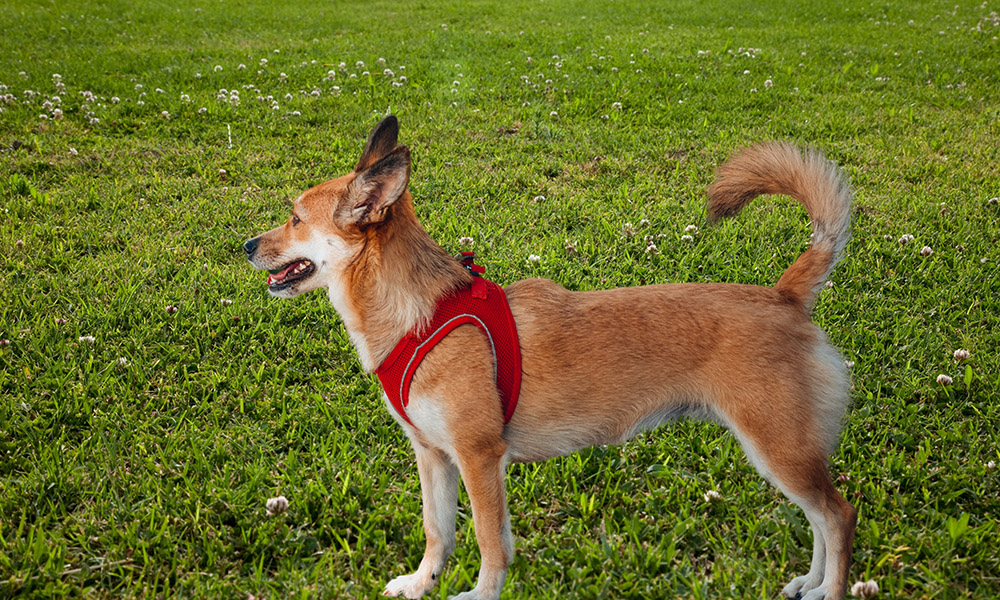
Grooming ✂️
The Norwegian Lundehund is accustomed to the frigid winters of Norway, and they have a thick, double coat that sheds quite a bit. They may not have complicated grooming needs, but you should prepare for daily brushing sessions to keep the shedding under control.
Norwegian Lundehunds should also receive regular nail trims and preventative dental care. It’s best to check their ears during grooming sessions and clean them as necessary, but you should only use an ear-cleaning solution that’s approved by your veterinarian.
Health and Conditions 🏥
One advantage of the Norwegian Lundehund’s small population is that they have fewer inherited health conditions. However, they can inherit Lundehund Syndrome, which impacts the digestive tract and prevents nutrients from absorbing. They’re also susceptible to the luxating patella.
- Eye conditions
- Lundehund Syndrome
- Luxating patella

Male vs Female
Male Norwegian Lundehunds are slightly taller and heavier than females. Besides that, there’s not much difference between the two sexes, especially if they’re spayed or neutered.
If you aren’t planning to breed your dog, talk to your vet about spaying or neutering them. The procedures can prevent some health problems later in life. Plus, you won’t have to deal with a messy heat cycle every 6 months or so and worry about your pup accidentally getting pregnant.

3 Little-Known Facts About the Norwegian Lundehund
1. They’re Named After Their Prey.
“Lunde” means Puffin in Norwegian, and “hund” means hound. It’s a practical name for a breed created for a singular purpose, even though they’re no longer “Puffin dogs.”
2. They Have Six Toes on Each Foot.
Norwegian Lundehunds have several unique physical traits that helped them perform their original purpose of Puffin hunting. One is that they have six toes on each foot, four pointing forward and two positioned on the inside like human thumbs.
This unusual foot design helped the Lundehund maintain their balance on unstable, rocky terrain.
3. They’re Unusually Flexible.
Norwegian Lundehunds frequently had to track Puffins into their narrow, underground burrows. Because of that, they’re extraordinarily flexible. They can bend their heads to touch their backs and spread their front legs to the side.
They can also wiggle their ears and close the canal completely if needed.

Final Thoughts
As you can see, Norwegian Lundehunds are rare gems in the canine kingdom. If you think one of these sweet, shy dogs is the right match for your family, you might need to save up on patience and money to acquire one.
Until the Norwegian Lundehund becomes better known in America, breeders will likely remain few and far between. Make sure you’re prepared to properly care for a Norwegian Lundehund before you go to the trouble of locating a breeder.
Featured Image Credit: Eric Isselee, Shutterstock
